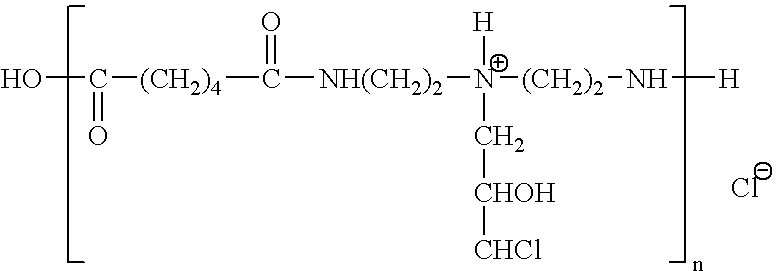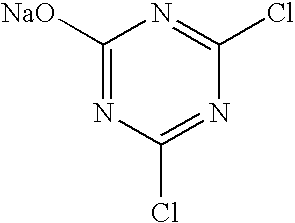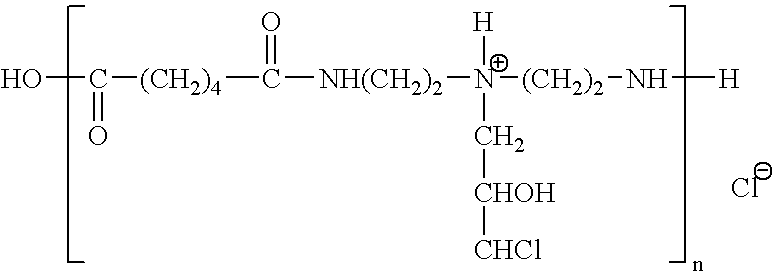Film for assaying protease activity
a protease activity and film technology, applied in biochemistry apparatus and processes, instruments, enzymology, etc., can solve the problem that the activity of proteases relevant to diseases cannot be selectively detected
- Summary
- Abstract
- Description
- Claims
- Application Information
AI Technical Summary
Benefits of technology
Problems solved by technology
Method used
Image
Examples
example 1
Preparation of Carboxymethyltransferrin
[0064] 10 g of bovine serum transferrin was dissolved in 3 L of 0.5 M Tris-hydrochloric acid buffer (pH 8.5) containing 7 M guanidine hydrochloride and 10 mM EDTA disodium. After inside of the vessel was purged with nitrogen gas, the reaction mixture was added with 10 g of dithiothreitol. The reaction mixture was stirred at room temperature for 2 hours and then added with 25 g of iodoacetic acid weighed in a place not exposed to direct light. The reaction was allowed at room temperature for 30 minutes under light shielding. After completion of the reaction, the reaction mixture was desalted by dialysis using a dialysis membrane having a cutoff molecular weight of 7,000. When the resulting reaction product was examined by SDS polyacrylamide electrophoresis, transferrin as the reaction material gave a band of a molecular weight of about 82,000, whilst the reaction product gave a band of an increased molecular weight about 88,000.
example 2
Preparation of Cyanoethyltransferrin
[0065] 10 g of bovine serum transferrin was dissolved in 2 L of 8 M urea aqueous solution. The reaction mixture was adjusted to pH 8.0 with sodium hydroxide, and inside of the vessel was purged with nitrogen gas. Then, the reaction mixture was added with 10 g of dithiothreitol. The reaction mixture was stirred at room temperature for 2 hours and then added with 6.9 g of acrylonitrile. Then, the reaction was allowed at room temperature for 4 hours. After completion of the reaction, the reaction mixture was desalted by dialysis using a dialysis membrane having a cutoff molecular weight of 7,000. When the resulting reaction product was examined by SDS polyacrylamide electrophoresis, the product gave a band on the higher molecular weight side relative to transferrin as the reaction material.
example 3
Preparation of Ethylsuccinimidotransferrin
[0066] 10 g of bovine serum transferrin was dissolved in 2 L of 8 M urea aqueous solution. The reaction mixture was adjusted to pH 8.0 with sodium hydroxide, and inside of the vessel was purged with nitrogen gas. Then, the reaction mixture was added with 10 g of dithiothreitol. The reaction mixture was stirred at room temperature for 2 hours and then added with 19 g of N-ethylmaleimide. After the reaction was carried out at room temperature for 2 hours, the reaction mixture was desalted by dialysis using a dialysis membrane having a cutoff molecular weight of 7,000. When the resulting reaction product was examined by SDS polyacrylamide electrophoresis, the product gave a band on the higher molecular weight side relative to transferrin as the reaction material.
PUM
| Property | Measurement | Unit |
|---|---|---|
| thickness | aaaaa | aaaaa |
| thickness | aaaaa | aaaaa |
| temperature | aaaaa | aaaaa |
Abstract
Description
Claims
Application Information
 Login to View More
Login to View More - R&D
- Intellectual Property
- Life Sciences
- Materials
- Tech Scout
- Unparalleled Data Quality
- Higher Quality Content
- 60% Fewer Hallucinations
Browse by: Latest US Patents, China's latest patents, Technical Efficacy Thesaurus, Application Domain, Technology Topic, Popular Technical Reports.
© 2025 PatSnap. All rights reserved.Legal|Privacy policy|Modern Slavery Act Transparency Statement|Sitemap|About US| Contact US: help@patsnap.com



